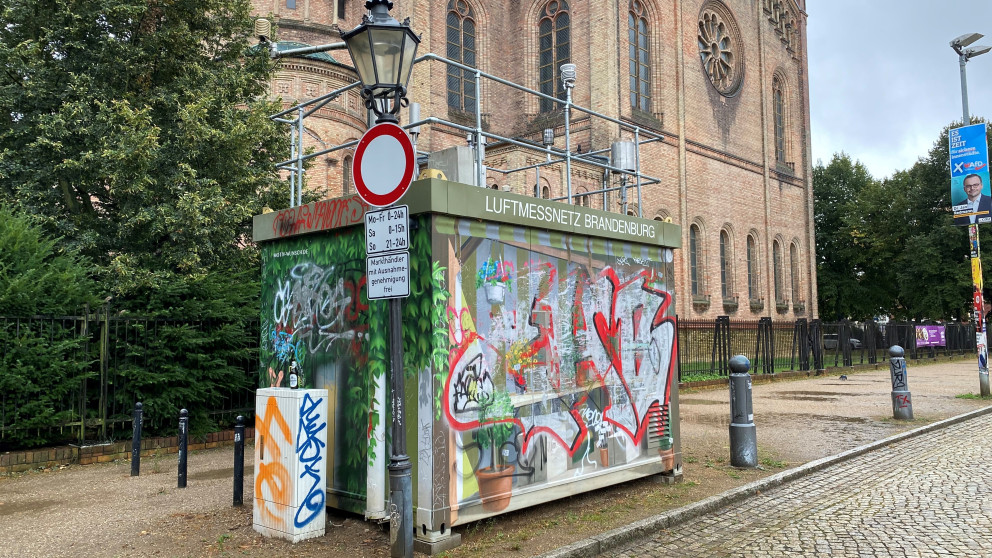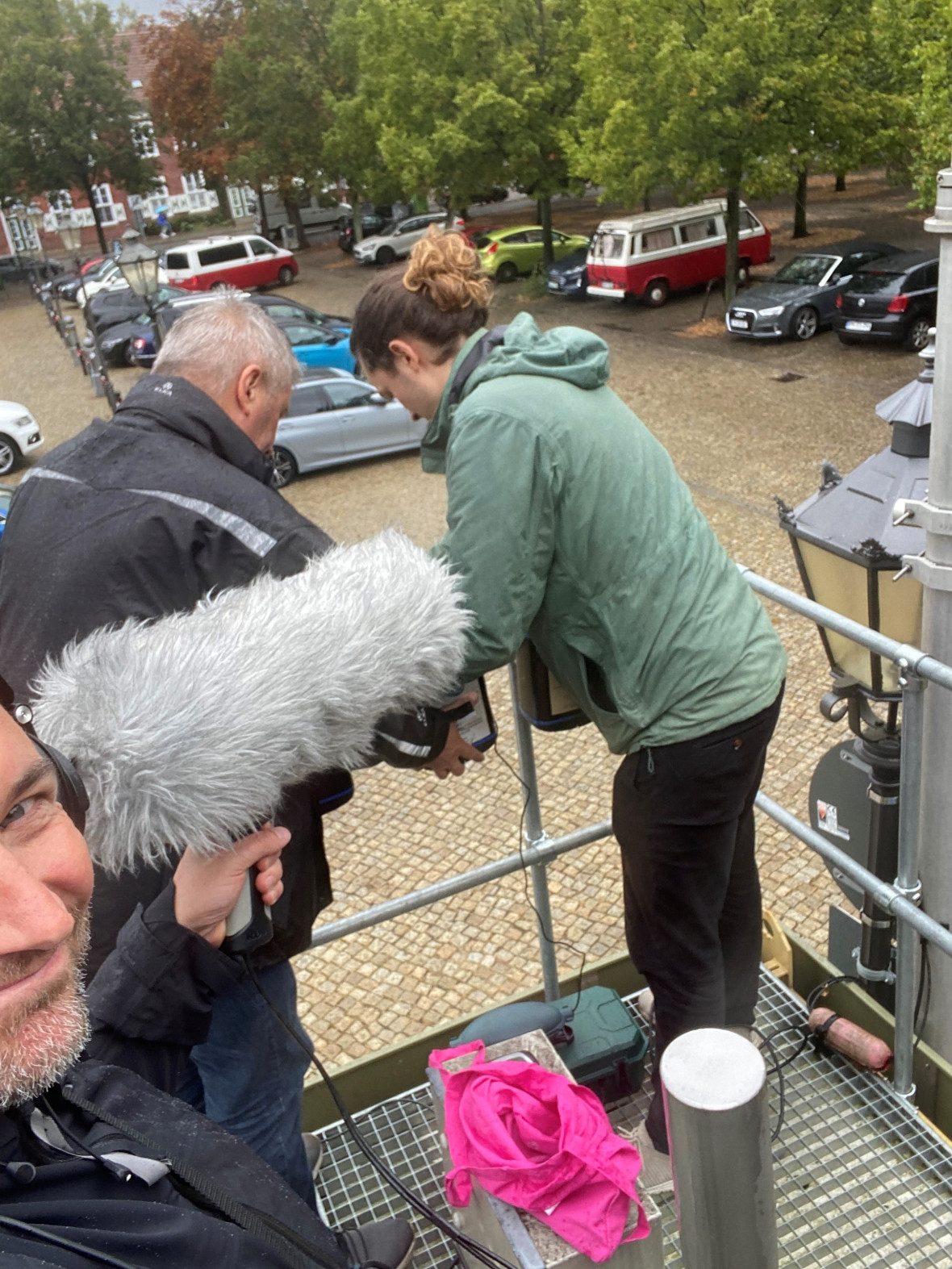How Potsdam is Rethinking Street Spaces
15.10.2024

"Wandel verhandeln" (Negotiating Change) is a German-language podcast about Brandenburg's transformation towards a sustainable and fairer society. In the podcast, we and our colleagues take a closer look at the conflicts that arise in connection with this transformation – but also at the positive impacts and new ideas – and invite changemakers and people in the community to have their say. An episode on sustainable mobility will be released today on several streaming platforms.
Part of making cities more sustainable is a mobility transition. A move away from individual vehicle use to mobility options that are healthier, not only for us, but also the environment we live in. There are myriad reasons to pursue a mobility transition. As air quality researchers, one of our main focus areas is on improving air quality and thereby improving and protecting human health. But the mobility transition promises to deliver more than clean air. Reducing individual vehicle use can reduce traffic accidents, reduce noise pollution, free up space for more livable cities that foster social interaction, and even reduce stress. A host of cities across Europe are making strides in this direction – Paris, with its ‘Code de la Rue’, Barcelona, with the super blocks, and Berlin, with the Berlin Mobility Act. But it isn’t just big cities, smaller cities also need to act and are making changes. Here in Potsdam, we are accompanying the implementation of one policy of the larger policy concept ‘City Centre: Rethinking Street Spaces’ and this podcast episode accompanies various participants and activities that are part of this journey.
In the concept put forward by the City of Potsdam, one of the main ideas is to reallocate some of the space currently used for car parking and use it for other purposes, whether for restaurants, local shops, pedestrians, or bicycling. In the episode, Bernd Rubelt, Councillor for Urban Development, Construction, Economic Affairs and the Environment, emphasises the urgency of the project:
"The fact that the city has a strong historical character and that so little was changed in the period following the Second World War means that Potsdam has a relatively intact historical urban layout. On the other hand, we have a growing population. The issues that arise from this are focused almost exclusively in the areas of mobility and housing. And mobility is, so to speak, a core challenge for a city like Potsdam."

As part of the process of creating the overall concept, a number of workshops were held where local residents were invited to share their ideas. And while this is a step in the right direction, there are some major hurdles to any substantial changes sufficient to meaningfully reduce emissions. Removing some parking is unlikely to reduce car-use substantially. Indeed, the City of Potsdam has set its sights on creating a ‘low-car city centre’, not a car-free one, as the planning document states: “The aim of this concept is to achieve an equitable use of space through fewer cars and more spaces for all, but not a completely car-free city in the near term.” Removing some parking here and there is positive and may potentially make a difference to the feel of the city centre, depending on how it is repurposed and how many spaces are taken out, but it falls far short of what is needed for sustainable cities. The effects on overall traffic through an area and on noise and air quality are likely to be minimal and hyper local at best. Unfortunately, there have not been and are no a priori plans to quantitatively evaluate these end points either, beyond the very small part we are accompanying.
In our research, we plan to quantify any possible changes that might result, based on air quality and traffic count measurements on one of the streets where changes will be made. This includes monitoring the situation before the change is made, as well as after, and integrating the monitoring data with background information. As we discuss in the podcast, we use small sensors along with data from monitoring stations to evaluate a policy like this, since monitoring stations are large and expensive and cannot be present everywhere. We have done this in similar scenarios in Berlin, where we accompanied the implementation of mobility-related policies to quantify the effect on air quality. For example, the redistribution of street space on Kottbusser Damm to create a protected bike lane reduced cyclists’ exposure to nitrogen dioxide by roughly 20%, while the pedestrianization of Friedrichstrasse reduced nitrogen dioxide concentrations to that of the general urban background, rather than higher concentrations that are often seen on heavily trafficked streets as was the case before the change. While beneficial for the local population and people spending time in the area or cycling through, these changes were all found to be hyper local, without any broader influence on the city’s air quality and had little effect on particulate matter concentrations.
To achieve farther reaching results and adequately protect health, much more will need to be done. The revisions to the Ambient Air Quality Directive make it clear that cities still have a lot of work to do to adequately protect human health. That also means addressing the use of individual motor vehicles in urban areas, which is a politically charged issue, especially here in Germany. Both sides of this coin become apparent in the interviews conducted for this podcast in Potsdam. An employee at a local pharmacy commented on the upsides and downsides of the changes underway, noting that while she appreciates the advantages of car-free streets, they do present difficulties for some customers: “It is difficult for patients experiencing pain, who now have to walk much further because parking has become so difficult in this area. Most people can expect to wait at least half an hour at their GP. Because of this they can't use the short-stay car parks, which are often full and are limited to half an hour."
As things currently stand, it will take a champion who can win over the public or a grassroots movement to achieve change that is meaningful, fair, and socially responsible. Whatever the impetus, more substantial changes to achieve car-free cities are needed for the transition to sustainability.


